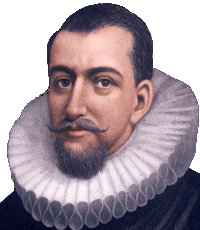Europeans in the “New World”
This was when the Europeans came to divide the world between them. Or rather, when it was divided by the pope in Rome and given to Portugal and Spain. For many Spaniards — the soldiers known as conquistadors — the wars in the Americas were simply an extension of the wars which they already had fought in Spain. Neither Arabs nor “Indians” were Christian, and just like the Arabs, the Indians were enemies to be defeated. Hernán Cortés and his men marched into Tenochtitlan in 1519, and Francisco Pizarro’s army captured Cuzco in 1533. Despite their awesome power, both the Aztecs and the Incas turned out to be surprisingly easy to conquer, and in both cases, the Spaniards took control by means of only a few hundred men. In fact, both empires consisted of loosely held together coalitions made up of many different political entities, and some of these subjects were quite happy to side with the Europeans. Although the Incas eventually regrouped and organized a military resistance, it was far too little, too late. Their last stronghold fell in 1572.
What the Europeans more than anything were looking for in the New World was gold. Columbus’s own descriptions of his discoveries contained endless references to how much gold the new continent contained. This, he knew, was the best way to get European kings to back more voyages of exploration. Although the Europeans indeed did find some gold, they found even more silver. In fact, there was a mountain — Potosí in Peru — which was said to be made entirely of silver.
In the end, the European occupation of the Americas resulted in genocide. Some indigenous people were killed in military confrontations, many were worked to death in mines or on plantations, but the vast majority of people died as a result of exposure to European diseases like smallpox and measles. These illnesses had long existed in Europe, and the Europeans had adapted themselves to them, but to the people of the Americas, they were deadly. It is estimated that perhaps 80 percent of the indigenous population of South, Central and North America perished as a result. This was equal to tens of millions of people. The impact on the population of the Americas was consequently far worse than the impact of the Black Death on Asia and Europe. As a result of the genocide, there were not enough indigenous people who could do the physical labor involved in exploiting the natural wealth of the continent. In response, the Europeans began importing slaves from Africa, often sold to them by West African kingdoms. From the sixteenth century to the nineteenth, some 12 million African slaves were forcibly transported across the Atlantic Ocean. Although the international trade in slaves was banned in the 1830s, slavery was abolished in the United States in 1865 and in Brazil only in 1888.
Not only germs and human beings were exchanged, however, but also a wide range of plants, fruits, and animals. Since life on the American continent had evolved independently of the rest of the world, it had developed a wide range of unique species. There were also many species that existed elsewhere in the world but not here. Through the global trading networks these plants, fruits, and animals soon spread far and wide.
As far as North America is concerned, it was originally settled by the Dutch, the English, and the French, but eventually, it was English settlers who came to dominate. A substantial proportion of the first settlers were members of various religious minorities — the so-called “Puritans” — who took refuge here after the English Civil War, 1642-1651. They called it “New England.” In North America, too European germs quickly wiped out entire populations. This was why the land looked empty and unoccupied when subsequent waves of Europeans arrived. The Europeans refer to it as terra nullius, Latin for “no one’s land.” Land which did not belong to anyone, the Europeans argued, was there for the taking. It was God’s will that they should take charge of the New World. And take charge they did.



